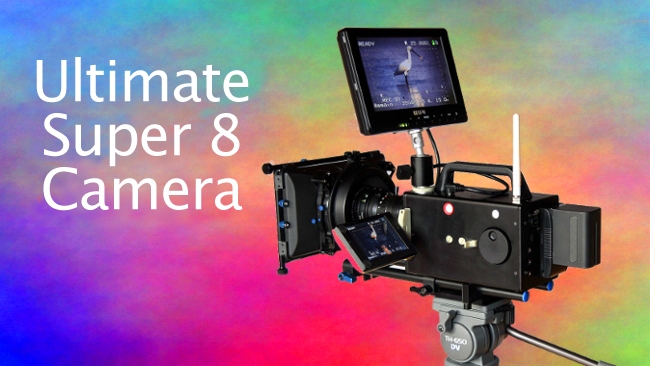
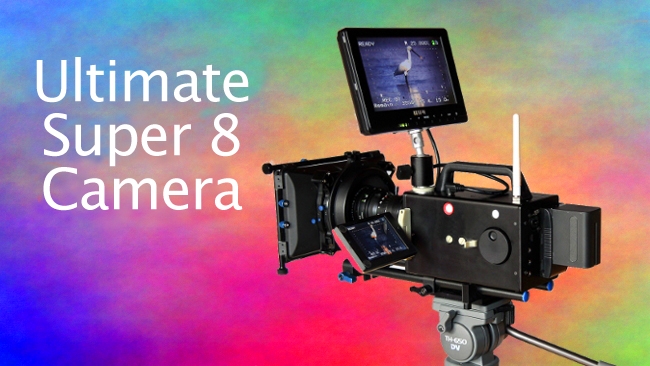 Logmar Super 8 camera
Logmar Super 8 camera
Film is back! People are actually designing and making film cameras again. And this one uses accessible film stock - Super 8mmm
A new professional level super 8 camera? I had a bit of a shock at first when I stumbled across news of a brand new professional level Super 8 camera. The camera features pin registration with a traditional film gate, a crystal sync motor, built in sound recording, video tap style functionality, takes c-mount lenses, and has camera firmware that can be updated. At first I believed in must be some kind of strange April fools joke or something, although you know, it isn’t exactly April.
The camera has been created by a Danish father and son team Tommy and Lasse. 63 year old Tommy is an expert on the Lathe and precision mechanics whereas his 30 year old son is similarly skilled in micro-controller software. Together they have put together a Super 8 camera that can rival high end 16mm cameras in functionality. We previously had an article about the possibility of people creating their own video cameras at home. We definitely weren’t expecting people to start creating their own film cameras in their homes however.
Super 8
The "Logmar" Super 8 camera as it is called, takes it’s cue from an obscure and mostly forgotten Super 8 high speed camera designed for scientific applications. It provides a way to extract film from a Super 8 cartridge and to form a conventional film loop such as you might find on 35mm and 16mm movie cameras. This allows the camera to sidestep all the compromises involved with the old cartridge system and effectively allows each little cartridge to act like a conventional film magazine (only of course they come pre-loaded with film so you don’t have to spend time with your hands in the changing bag hoping you have managed to get it all loaded correctly).
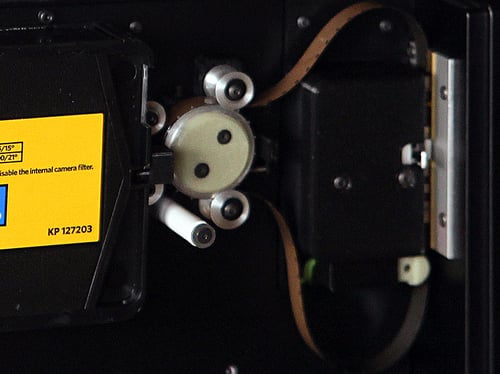
Inside the new Super 8 Camera - the film loop
The camera also features a registration pin like you might find at the higher end of 35mm and 16mm movie cameras. This eliminates all gate weave and any unsteadiness from the film transport resulting in rock steady images.
The film gate has also been widened to use the now defunct space on the camera negative that used to be reserved for a sound stripe. This not only allows the camera to use more of the negative space on the film (giving potentially higher resolution images) but of course makes it easier to achieve aspect ratios that are considered to be more standard these days (such as the ubiquitous 16:9)
Instead of an optical viewfinder, the camera has a video-tap that allows the use of a lcd screens like you might find on digital cinema cameras.
Advanced Electronics
The system is based around a powerful ARM cortex 3 CPU which controls all the functions and is software upgradable. This setup also provides the means to record high quality digital audio to SD cards. Sadly there is no way of locking the audio to the film images at present despite the fact they are both crystal locked to run at the same speed. It’s not a single system sound setup so you will have to slate as in the traditional way as you would have to on 16mm and 35mm movie cameras. The camera can provide +48v phantom power to microphones. The system also appears to support wi-fi, although I’m not sure what is planned for this at present.
The camera runs using off the shelf conventional 7.2 volt camcorder batteries which are available cheaply. The use of a c-mount for lenses gives you a lot of cheaper options in the lens department too.
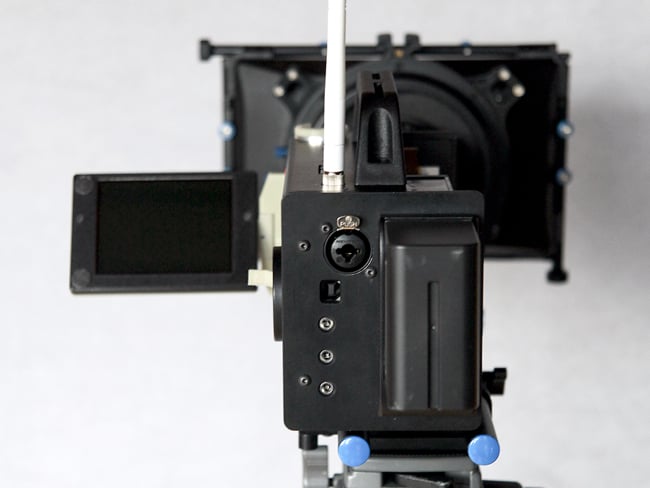
It’s hoped the camera will be available as early as April 2014 and will cost between 2000 euros and 2500 euros. It will be interesting to see how well such a high end Super 8 camera will do in the current climate, there is nothing in the Super 8 world with such an incredibly high specification and it seems like it could find a place for those using Super 8 in professional productions. Obviously it’s a lot more expensive than a second hand camera off e-bay, but then the second hand Super 8 camera are getting quite worn out these days. In another time this could have been the ultimate low budget film camera, but I’m not sure how much modern low-budget movie makers are still committed to shooting on film.
There is a great article about the camera on the filmkorn website which gives extensive details and is worth checking out if you are interested in learning more.
Read: How to rejuvenate an old HD camera
Tags: Technology
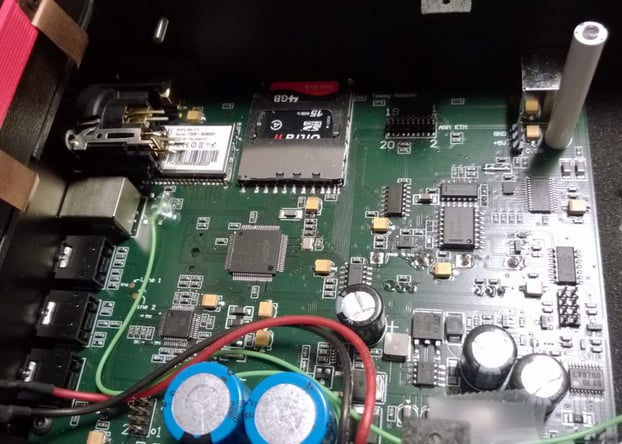


Comments